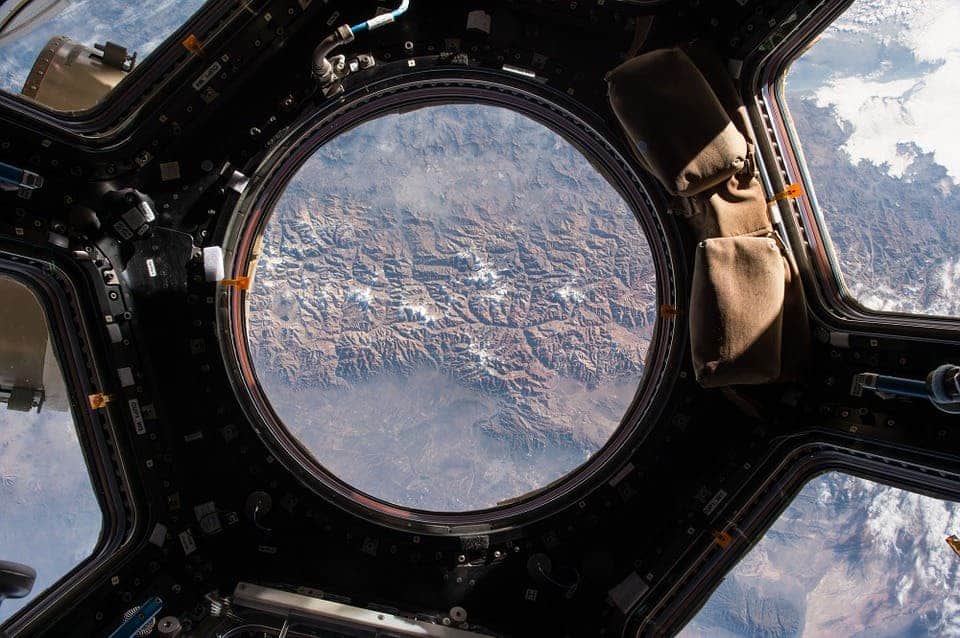Yesterday NASA released the list of its 2017 Innovative Advanced Concepts (NIAC) projects, showing what we should expect for the future of space exploration.

There is one program ran by NASA whose mission can be best summed up as “think of something that would probably be possible in a sci-fi book set about 50 years in the future — now let’s make it happen.” It’s named the NASA Innovative Advanced Concepts, and it is the squared (maybe even cubed) creme de la creme of scientific pursuit in space.
The current program has been on-going since 2011, although there was a previous, slightly-different-but-basically-the-same NIAC in operation from 1998 to 2007. During this time, NIAC has awarded millions of dollars for ideas which could bring a long-term and far-reaching impact into space exploration by “creating breakthroughs, radically better or entirely new aerospace concepts.” The program works in phases of funding, with Phase I projects receiving and estimated US$125,000 in funding for nine months to “support initial definition and analysis of their concepts.” If Phase I shows the idea is feasible and will benefit our forays into space, it becomes eligible for Phase II funding — which can be worth as much as $500,000, for two-year studies.
Yesterday, the agency released the latest list of approved Phase I and Phase II grants and boy oh boy we’re talking about some really heavy ideas here. Among them, there’s a proposal for an artificial gravity device intended for deep-space missions, swarms of softbots to pick apart asteroids, a self-powered Venus probe and, I kid you not — “Solar Surfing.” Any one of these paper names would feel at home as the title of the next big sci-fi book and could make a space buff’s glasses foggy with excitement.
So sit back and let your imagination fly to the time where these ideas will be zooming around in the skies above us.
[panel style=”panel-success” title=”Phase I projects:” footer=””]
- A Synthetic Biology Architecture to Detoxify and Enrich Mars Soil for Agriculture — Adam Arkin, University of California, Berkeley.
- A Breakthrough Propulsion Architecture for Interstellar Precursor Missions — John Brophy, NASA’s Jet Propulsion Laboratory (JPL) in Pasadena, California.
- Evacuated Airship for Mars Missions — John-Paul Clarke, Georgia Institute of Technology in Atlanta.
- Mach Effects for In Space Propulsion: Interstellar Mission — Heidi Fearn, Space Studies Institute in Mojave, California.
- Pluto Hop, Skip, and Jump — Benjamin Goldman, Global Aerospace Corporation in Irwindale, California.
- Turbolift — Jason Gruber, Innovative Medical Solutions Group in Tampa, Florida.
- Phobos L1 Operational Tether Experiment — Kevin Kempton, NASA’s Langley Research Center in Hampton, Virginia.
- Gradient Field Imploding Liner Fusion Propulsion System — Michael LaPointe, NASA’s Marshall Space Flight Center in Huntsville, Alabama.
- Massively Expanded NEA Accessibility via Microwave-Sintered Aerobrakes — John Lewis, Deep Space Industries, Inc., in Moffett Field, California.
- Dismantling Rubble Pile Asteroids with Area-of-Effect Soft-bots — Jay McMahon, University of Colorado, Boulder.
- Continuous Electrode Inertial Electrostatic Confinement Fusion — Raymond Sedwick, University of Maryland, College Park.
- Sutter: Breakthrough Telescope Innovation for Asteroid Survey Missions to Start a Gold Rush in Space — Joel Sercel, TransAstra in Lake View Terrace, California.
- Direct Multipixel Imaging and Spectroscopy of an Exoplanet with a Solar Gravity Lens Mission — Slava Turyshev, JPL.
- Solar Surfing — Robert Youngquist, NASA’s Kennedy Space Center in Florida.
- A Direct Probe of Dark Energy Interactions with a Solar System Laboratory — Nan Yu, JPL.
[/panel]
“The 2017 NIAC Phase I competition has resulted in an excellent set of studies. All of the final candidates were outstanding,” said Jason Derleth, NIAC program executive.
“We look forward to seeing how each new study will expand how we explore the universe.”
[panel style=”panel-info” title=”Phase II projects:” footer=””]
- Venus Interior Probe Using In-situ Power and Propulsion, Ratnakumar Bugga, JPL.
- Remote Laser Evaporative Molecular Absorption Spectroscopy Sensor System, Gary Hughes, California Polytechnic State University in San Luis Obispo.
- Brane Craft Phase II, Siegfried Janson, The Aerospace Corporation in El Segundo, California.
- Stellar Echo Imaging of Exoplanets, Chris Mann, Nanohmics, Inc., Austin, Texas.
- Automaton Rover for Extreme Environments, Jonathan Sauder, JPL.
- Optical Mining of Asteroids, Moons, and Planets to Enable Sustainable Human Exploration and Space Industrialization, Joel Sercel, TransAstra Corp.
- Fusion-Enabled Pluto Orbiter and Lander, Stephanie Thomas, Princeton Satellite Systems, Inc., in Plainsboro, New Jersey.
[/panel]
“Phase II studies can accomplish a great deal in their two years with NIAC. It is always wonderful to see how our Fellows plan to excel,” said Derleth.
“The 2017 NIAC Phase II studies are exciting, and it is wonderful to be able to welcome these innovators back in to the program. Hopefully, they will all go on to do what NIAC does best – change the possible.”
All the projects listed here have been evaluated for technical viability and innovativeness through a peer-review process. They are still in early development and most will require 10 or more years of work before being ready for field testing.






